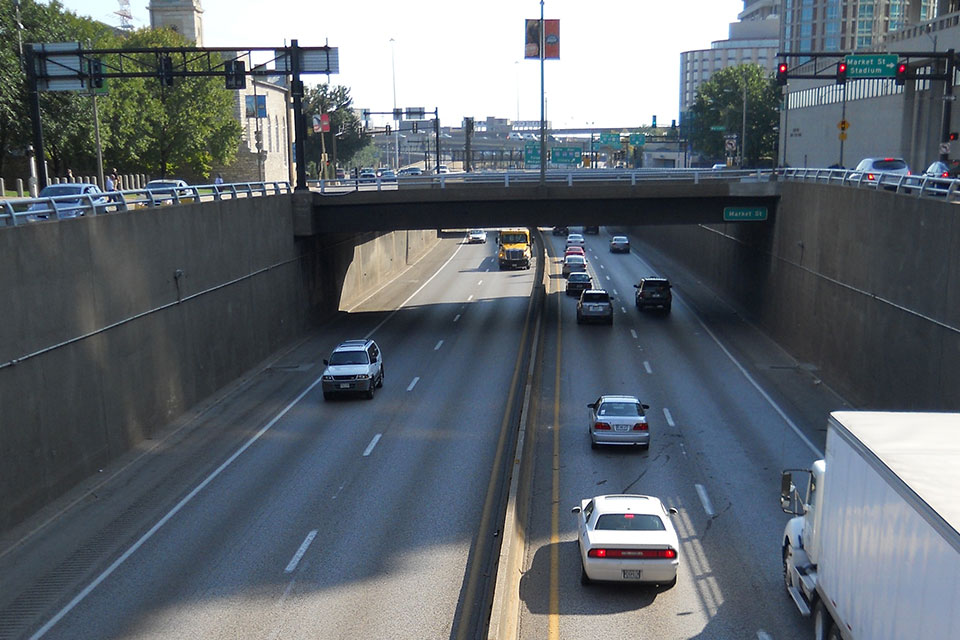ADHD Behind the Wheel: Ways to Keep Teen Drivers Safe
The summer months are the busiest time on the roads and for teens with ADHD, a new driver’s license carries a lot of responsibility. July and August are the busiest months for traffic with more cars on the road than any other time of year. For teens with ADHD, a new driver’s license carries a lot of responsibility and a need to focus on the road.
Saint Louis University (SLU) researcher Annie Artiga Garner, Ph.D., is doing her part to make the roads safer not just for teens with ADHD, but for every driver.
Garner, an associate professor of psychology at SLU and who studies teens, ADHD and distracted driving, recently published findings in the New England Journal of Medicine with colleagues from the University of Cincinnati about how to reduce the number teen driving crash rates.
“We know that driving behavior is pretty good when mom or dad is in the car,” Garner said. “It is during those first months of being a new driver, alone in the vehicle without someone else paying attention for you, that we see crashes.”
With the busiest months of the road straight ahead, Garner provides tips for parents and teens on how to get from Point A to Point B as safely as possible.
One: Focus Up
When you get behind the wheel, you want to be in a calm and collected state. Teaching your teen a simple trick to focus the mind can do wonders to reduce stress or distractions while driving.
After sitting down in the driver’s seat, make sure your seat and mirrors are set and that you are buckled up. Before taking the car out of park, set up your playlist or radio choices, and begin using maps if necessary. Finally, take a few deep breaths and count to 10.Practicing this ritual can help teens set an intention to take driving seriously and approach each trip with focus.
Two: Establish the Driver’s Seat as a Cell Phone-Free Zone
The number one piece of advice Garner shares is to keep cell phones out of sight and out of reach.
“Phones are a major contributing factor to distracted driving,” Garner said.

“Talk with your teen about what they can do to prevent themselves from getting distracted by their phone when they’re in the car,” she said. “Turning the phone to ‘do not disturb’ can help, or put it in the glove box or center console so they’re not tempted to look at it.”
It’s unrealistic to have teens leave the house without a cell phone, especially in the case of emergencies, so parents may not want to prohibit phones entirely. Rather, establish the car as a space where phone use is off limits while the car is on.
“Ask your teen to commit to not using their phone while driving,” Garner said. “Setting the expectation and having them commit to that can go a long way in creating good habits."
Three: Three’s a Crowd
Limiting the number of passengers and their distractions has also proven to be a big help. Teenagers already have the highest percentage of accidents among all drivers, and that number rises dramatically for every passenger added to the car.
“Talk to your teen about having fewer people in the car when they’re driving,” Garner said. “Many states already have a limit for new drivers, but you may want to make your own rule too, even once teens are old enough to have more kids in the car on the ride.”
Four: Not All Technology is a Distraction
Many newer model cars come with safety features that alert drivers when they are drifting into other lanes, following the driver in front of them too closely or even when they are not looking at the road.
“These features have helped reduce crashes for all drivers,” Garner said. “Some newer cars also have an eye-tracking feature that beeps when you look away for too long.”
Buying a brand-new car for a brand-new driver may not be financially feasible for everyone, but keeping those features in mind when in need of a new vehicle could do wonders for new drivers.
Five: Practice Makes Perfect
“Driving is a skill. It needs time and it needs practice,” Garner said. “Teaching teens safe driving skills early will keep them safe while driving in the future and will reinforce those habits every time they get behind the wheel.”
More time behind the wheel makes better drivers. It’s also not just about how long you drive, but where you drive, as experiencing driving on a number of different roads at different times of the day with different weather conditions can really improve anyone’s driving.
“It’s really helpful for those with ADHD, but it’s also a good reminder for everyone who is driving.”


















